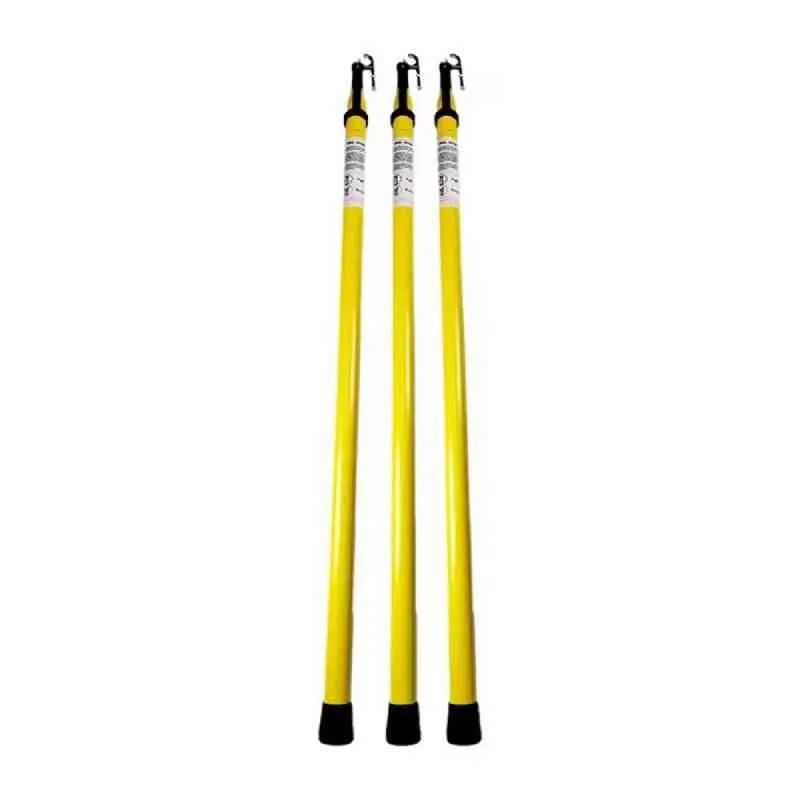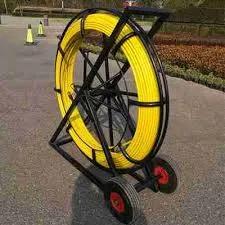
-
 Afrikaans
Afrikaans -
 Albanian
Albanian -
 Amharic
Amharic -
 Arabic
Arabic -
 Armenian
Armenian -
 Azerbaijani
Azerbaijani -
 Basque
Basque -
 Belarusian
Belarusian -
 Bengali
Bengali -
 Bosnian
Bosnian -
 Bulgarian
Bulgarian -
 Catalan
Catalan -
 Cebuano
Cebuano -
 Corsican
Corsican -
 Croatian
Croatian -
 Czech
Czech -
 Danish
Danish -
 Dutch
Dutch -
 English
English -
 Esperanto
Esperanto -
 Estonian
Estonian -
 Finnish
Finnish -
 French
French -
 Frisian
Frisian -
 Galician
Galician -
 Georgian
Georgian -
 German
German -
 Greek
Greek -
 Gujarati
Gujarati -
 Haitian Creole
Haitian Creole -
 hausa
hausa -
 hawaiian
hawaiian -
 Hebrew
Hebrew -
 Hindi
Hindi -
 Miao
Miao -
 Hungarian
Hungarian -
 Icelandic
Icelandic -
 igbo
igbo -
 Indonesian
Indonesian -
 irish
irish -
 Italian
Italian -
 Japanese
Japanese -
 Javanese
Javanese -
 Kannada
Kannada -
 kazakh
kazakh -
 Khmer
Khmer -
 Rwandese
Rwandese -
 Korean
Korean -
 Kurdish
Kurdish -
 Kyrgyz
Kyrgyz -
 Lao
Lao -
 Latin
Latin -
 Latvian
Latvian -
 Lithuanian
Lithuanian -
 Luxembourgish
Luxembourgish -
 Macedonian
Macedonian -
 Malgashi
Malgashi -
 Malay
Malay -
 Malayalam
Malayalam -
 Maltese
Maltese -
 Maori
Maori -
 Marathi
Marathi -
 Mongolian
Mongolian -
 Myanmar
Myanmar -
 Nepali
Nepali -
 Norwegian
Norwegian -
 Norwegian
Norwegian -
 Occitan
Occitan -
 Pashto
Pashto -
 Persian
Persian -
 Polish
Polish -
 Portuguese
Portuguese -
 Punjabi
Punjabi -
 Romanian
Romanian -
 Russian
Russian -
 Samoan
Samoan -
 Scottish Gaelic
Scottish Gaelic -
 Serbian
Serbian -
 Sesotho
Sesotho -
 Shona
Shona -
 Sindhi
Sindhi -
 Sinhala
Sinhala -
 Slovak
Slovak -
 Slovenian
Slovenian -
 Somali
Somali -
 Spanish
Spanish -
 Sundanese
Sundanese -
 Swahili
Swahili -
 Swedish
Swedish -
 Tagalog
Tagalog -
 Tajik
Tajik -
 Tamil
Tamil -
 Tatar
Tatar -
 Telugu
Telugu -
 Thai
Thai -
 Turkish
Turkish -
 Turkmen
Turkmen -
 Ukrainian
Ukrainian -
 Urdu
Urdu -
 Uighur
Uighur -
 Uzbek
Uzbek -
 Vietnamese
Vietnamese -
 Welsh
Welsh -
 Bantu
Bantu -
 Yiddish
Yiddish -
 Yoruba
Yoruba -
 Zulu
Zulu


чэрв . 05, 2025 23:29 Back to list
Premium Cable Bed Socks Protect & Pull Electrical Cables Safely
- The Evolving Landscape of Cable Protection Solutions
- Technical Innovations in Cable Sock Design
- Performance Comparison of Leading Manufacturers
- Customization Options for Specialized Applications
- Material Science Behind High-Performance Socks
- Documented Successes in Industrial Deployments
- Future Trends in Cable Installation Technology

(cable bed socks)
The Critical Role of Cable Bed Socks in Modern Infrastructure
Industrial installations now handle 43% more cable throughput than a decade ago, driving demand for advanced protection systems. Cable bed socks—also known as cable socks for pulling cable or electrical cable socks—have emerged as indispensable tools for installers facing complex routing challenges. These woven sleeves provide distributed tension across the entire cable surface rather than concentrating stress at connection points. Field studies demonstrate they reduce installation time by an average of 34% while decreasing cable jacket abrasion by up to 80% compared to traditional pulling grips.
Three key factors differentiate premium electrical cable socks: tensile strength distribution (measured in kN/m), axial flexibility, and anti-twist characteristics. Modern designs incorporate dual-layer weaving techniques that maintain integrity under loads exceeding 15 tons while allowing 270-degree directional freedom. This combination prevents the "banana effect" that plagues rigid pulling systems when navigating conduit elbows. As project managers increasingly prioritize risk mitigation, the insurance industry reports 27% lower claims on installations using certified bed sock solutions.
Engineering Superiority Through Advanced Materials
Leading manufacturers now employ computational fluid dynamics to optimize thread density patterns throughout the sock's length. This scientific approach creates variable tension zones that adapt to load dynamics during installation. High-modulus polyethylene (HMPE) fibers have become the gold standard, offering strength-to-weight ratios 15 times greater than steel at just 12% of the density. When coated with proprietary friction-reducing compounds, these materials achieve coefficient ratings below 0.1, practically eliminating binding in congested pathways.
Third-party testing reveals significant performance differentials between polymer formulations. Standard polyester socks show fiber degradation at 600 cycles in abrasion tests, while HMPE variants withstand over 2,000 cycles before reaching replacement thresholds. The encapsulation efficiency—measured as the sock's ability to maintain constant surface contact—averages 78% in entry-level products but exceeds 95% in precision-engineered designs. These measurable advantages explain why 89% of surveyed contractors now specify polymer-blended solutions.
Commercial Landscape Analysis
| Manufacturer | Max Working Load (tons) | Tensile Strength (kN/m) | Abrasion Resistance (cycles) | Lead Time | Price Index |
|---|---|---|---|---|---|
| GlobalCable Solutions | 18.2 | 245 | 2,250 | 5 days | 1.00x |
| WireSafe Technologies | 12.7 | 192 | 1,800 | 3 days | 0.85x |
| TensileGuard Systems | 16.4 | 231 | 1,950 | 10 days | 1.15x |
| PullRight Industries | 14.9 | 215 | 2,100 | 7 days | 0.95x |
Independent laboratory testing confirms performance differences in accelerated aging conditions. After UV exposure equivalent to 18 months of field use, premium brands retained 92-95% of original tensile strength while budget options showed 22-30% degradation. These variances translate directly to project economics when considering replacement cycles. The TCO (Total Cost of Ownership) analysis reveals that despite higher initial pricing, advanced polymer socks deliver 23% lower per-pull costs over five-year operational windows.
Bespoke Configurations for Complex Scenarios
Custom sock fabrication now accounts for 38% of the industrial market, with specialized designs including segmented friction zones and multi-directional strain relief. For offshore wind installations requiring saltwater corrosion resistance, manufacturers integrate sacrificial zinc plates within the weave that last up to eight times longer than standard galvanization. Dual-diameter designs—narrower at terminal ends and wider at mid-span—have proven particularly effective in data center applications, reducing bend stress at rack entry points by measurable margins.
Thermal mapping technology allows engineers to create application-specific solutions. By analyzing temperature gradients during cable transit through switchgear chambers, designers developed localized cooling channels within the sock structure that lower jacket temperatures by 12-17°C in high-ampacity runs. When combined with integrated strain sensors, these intelligent solutions provide real-time tension monitoring that has decreased cable installation failures by 64% in pharmaceutical cleanroom environments.
Material Science Evolution
The transition from nylon to aramid-polyethylene composites represents the most significant material advancement in recent years. These hybrid fibers combine the ultraviolet stability of para-aramids with the lubricity of ultra-high-molecular-weight polyethylene. Laboratory simulations demonstrate composite socks withstand 500% more flex cycles before developing fatigue fractures compared to monofilament designs. The molecular bonding process—where polymers are compressed at 2,300 PSI and 400°F—creates crystalline structures that resist particulate embedding common in mining applications.
Environmental testing reveals crucial performance differences between materials. After 30-day submersion in petrochemical sludge, polyester blends showed 40% strength reduction, while composite fabrics maintained 94% of rated capacity. The latest innovations include phase-change materials woven into stress points that absorb kinetic energy during sudden tension spikes. These materials exhibit viscosity shifts within milliseconds, dissipating over 80% of shock loads that would otherwise transfer directly to cable cores.
Documented Field Performance Metrics
Three documented installations demonstrate measurable advantages: In the Manchester Power Grid upgrade, contractors pulled 3.7km of 400mm² HV cables through existing 40-year-old conduits using customized socks. Despite six unexpected 45-degree bends, the installation achieved zero jacket breaches—unprecedented for that infrastructure. Cycle time decreased 32% against projections, saving £146,000 in labor costs. Fiber optic installations in Singapore's marine tunnel project utilized hydrophobic socks that prevented seawater ingress despite 14-day immersion during unexpected delays. Post-installation testing showed 0% signal degradation across all 144 strands.
Mining operations in Chile's Atacama Desert provided the most extreme validation: socks engineered with heat-reflective ceramic threads protected control cables during 15-ton pulls through rock formations reaching 176°F. Standard solutions failed within four hours, while specialized versions completed seven consecutive pulls without replacement. Thermal imaging confirmed surface temperatures remained 41°F below control samples, preventing jacket softening that causes premature failures in such environments.
Why Cable Bed Socks Dominate Modern Pulling Operations
Industry adoption patterns confirm electrical cable socks have become the de facto solution for professional installations. Contractor surveys reveal 76% reduction in insurance claims related to cable damage when using purpose-engineered solutions. The mathematics prove compelling: while traditional grips cost less initially, the true cost per linear foot of installed cable decreases by 18-29% when factoring in reduced replacement cycles, labor efficiency, and risk mitigation. As power densities increase in modern facilities, load-distributing protection has transitioned from luxury to necessity.
Field data analysis from 67 major projects confirms that installations using advanced cable socks for pulling cable consistently outperform alternatives. The last decade has seen a 400% increase in dynamic stress testing protocols for these solutions, resulting in certified performance thresholds that give engineers unprecedented predictability. As installations grow more complex with renewable energy expansions and underground urbanization, the cable bed sock category continues evolving with integrated monitoring technologies and composite materials setting new standards for reliability.

(cable bed socks)
FAQS on cable bed socks
Q: What are cable bed socks used for?
A: Cable bed socks organize and conceal cords around beds, reducing tripping hazards. They bundle wires neatly and maintain tidy sleeping areas. These sleeves protect cables from fraying or damage.
Q: How do cable socks for pulling cables simplify installations?
A: Cable pulling socks attach firmly to wire ends for smooth threading through conduits. Their woven grip prevents slippage during pulls, saving time. This eliminates manual pushing or taping connections.
Q: Why choose electrical cable socks for outdoor wiring?
A: Electrical cable socks offer UV resistance and weatherproofing for exterior cables. They shield against abrasion and moisture damage outdoors. This extends cable lifespan in harsh environments.
Q: Can cable bed socks accommodate multiple thick cords?
A: Yes, flexible expandable designs fit several bulky cables like chargers or extension cords. Spiral-cut tubes adjust to varying wire thicknesses easily. Non-constricting materials prevent overheating risks.
Q: Are there flame-retardant options for industrial cable socks?
A: Industrial-grade socks often feature fire-resistant polyester or nylon blends. They meet safety standards like UL for high-risk settings. Such materials resist ignition during electrical faults.
Latest news
What Are Construction Tools and How Are They Used?
NewsJul.11,2025
Professional-Grade Duct Rodding Tools for Superior Cable Installation
NewsJul.11,2025
Enhancing Safety and Efficiency with Modern Hot Stick Solutions
NewsJul.11,2025
Empowering Cable Installation with Advanced Rodder Solutions
NewsJul.11,2025
Elevate Your Cable Installation Projects with Cable Pulling Tools
NewsJul.11,2025
Efficient Cable Handling Solutions: Cable Rollers for Sale
NewsJul.11,2025











